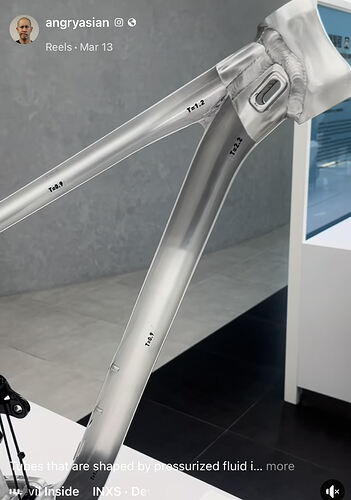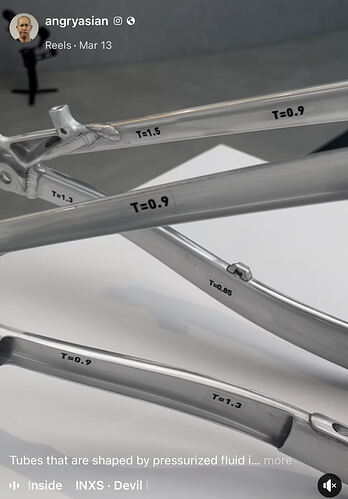I’m not trying to start an “aluminum vs steel” conversation. This isn’t about comfort or weight. Instead, I’m curious about as welded strength, heat treating, and fatigue. I’ve been doing a deep dive into materials and have a couple of questions for people more experienced than I.
Specifically, lets talk about welding.
When you weld either steel or aluminum, you have a heat affected zone (HAZ). From what I can find, the best estimate of the strength of the heat affected zone is to use the yield strength of the annealed condition of that alloy.
In the case of 6061, this means a T6 tempered part drops from 40ksi (276 MPa) to around 8ksi (55 MPa) for yield strength (MatWeb - The Online Materials Information Resource) in the HAZ. You can re-heat and strengthen 6061, but the process involves impractical DIY heating and quenching (for a discussion of that in detail, see thread at Aluminum Thread - #6 by ben.land101)) and creates distortion. The only alternative, as best I can tell, is to design the frame under the assumption that it only has the strength of “as-welded” aluminum, or around 8ksi, which essentially means using lots of aluminum and making the frame heavy to decrease forces on each part. Couple this with the fact that there is no fatigue strength or infinite life for aluminum, and you have to design significantly under the yield strength to avoid short-life cracking.
Now let’s turn to 4130 steel. It is stronger and heavier than aluminum. It gets affected by HAZ, but best I can tell even annealed 4130 has ~52+ ksi (360 MPa). (I’m unclear on whether you need to post heat-treat or not, but for thin tubes air cooling may be sufficient, or just annealing with a torch around the location of the weld.) Add to that the fact that 4130 has potentially “infinite” fatigue life below its fatigue strength limit, and it gets much easier to consider working with steel. Altogether, if you ignore the weight, it is more durable (doesn’t fatigue), repairable, and approachable (no heat treating) for the DIYer, albeit more expensive and harder to machine.
With that background, two categories of questions:
-
Aluminum: What do you all do with your aluminum frames? Do you not worry about fatigue cracks? Do you just check your frame over now and again? Do you use heavy aluminum? Do you go for 7005 or 7020 Al that home oven ages to 40ksi (if so, what’s your supplier?)
-
Steel: Do you use steel because of fatigue life concerns? Simply because it is stronger? Because it is easier to work with? Where do you find good pricing?
I appreciate your time and expertise and helping me find the way through the maze,
Adam

